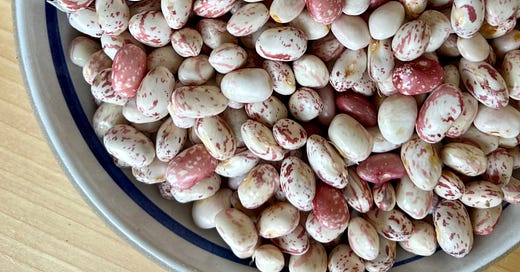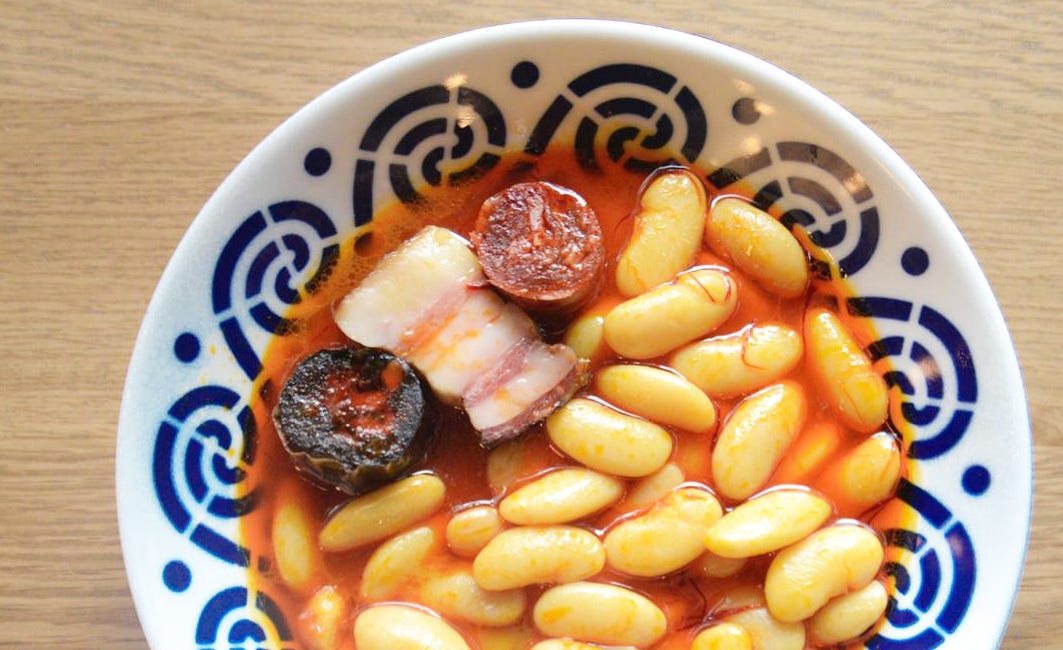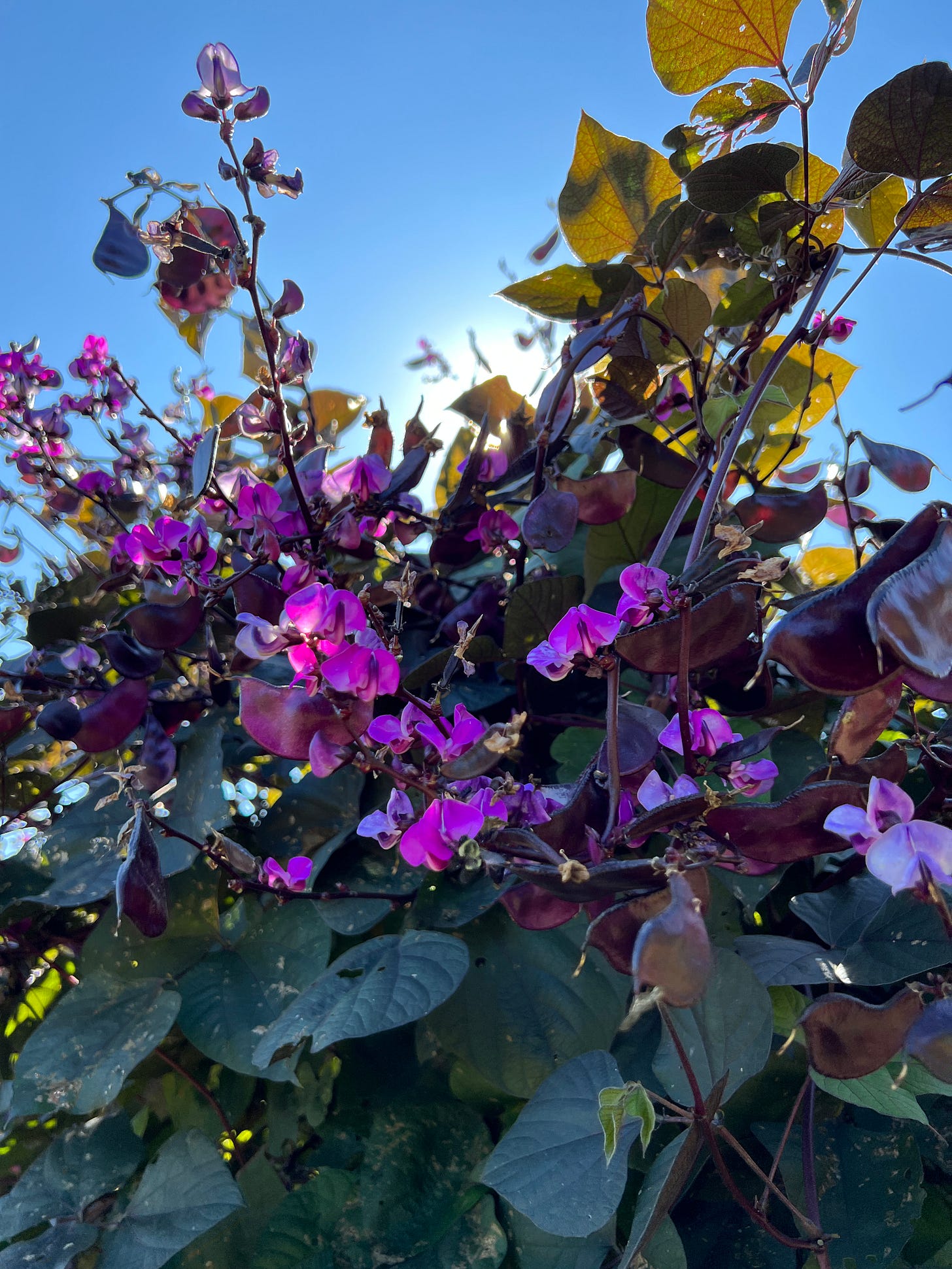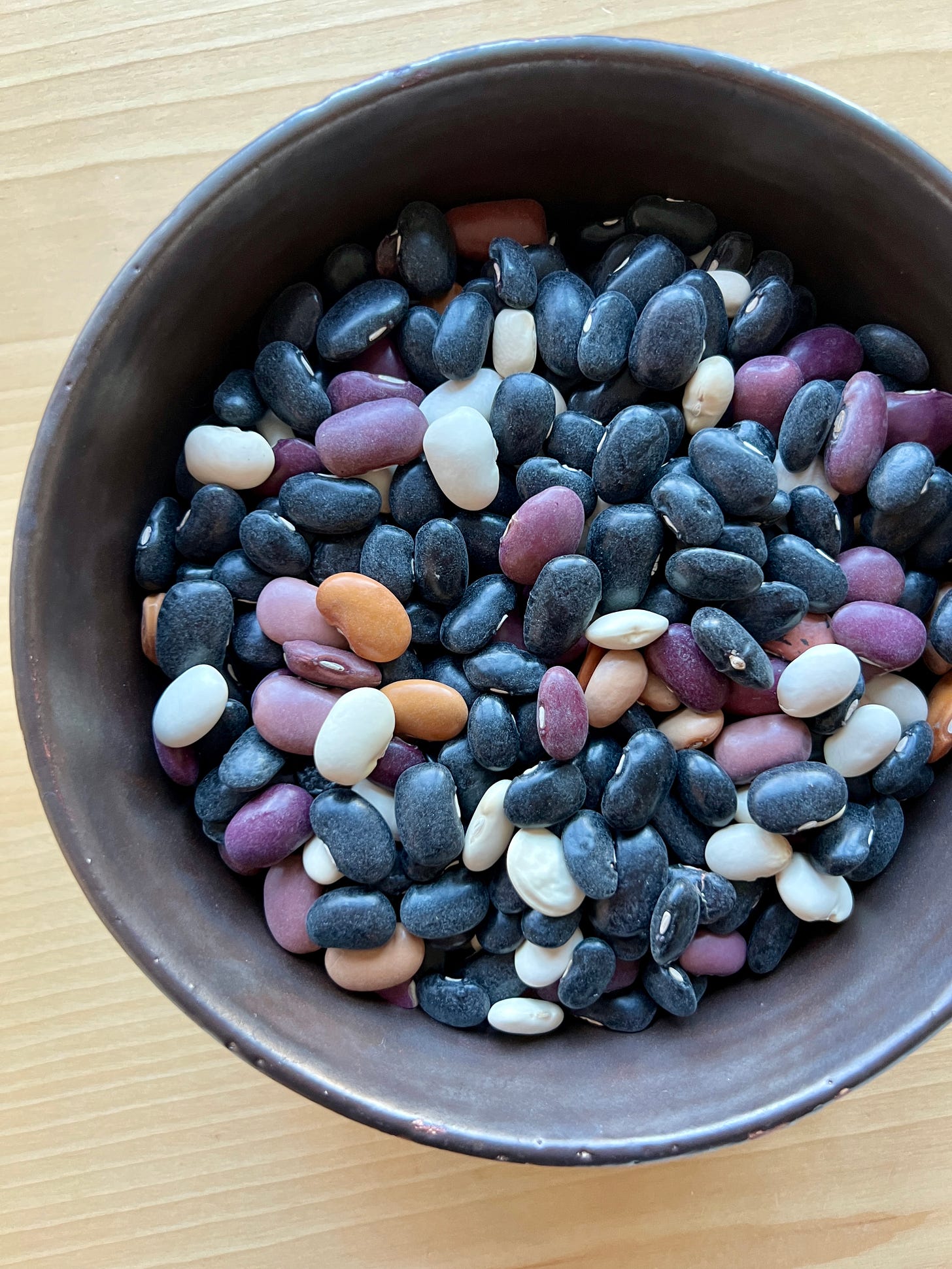It’s true wintertime now, we’re past the holidays and spring is still months away. This is the time that I like to eat stews, soups, warm dishes…like the pea soup I shared last week.
So today I wanted to talk about one of the best ingredients for soups and stews … beans! In America we are remembering the great civil rights leader Martin Luther King, Jr. so if you’re planning a day of service, maybe you can get a pot of beans cooking on low before you head out, and by the time you’re home you’ll have an amazing dinner waiting for you.
Some people think that beans are not the most sexy food in the world, but I think they are amazing. I like to imagine each bean as a single orb of caviar whose entire being is my responsibility to protect as I cook them. And when they’re cooked right, a bowl of humble beans can be every bit as magical as a spoonful of caviar.
Where I grew up, in Asturias in the north of Spain, we have a very famous local bean called fabes, a type of white runner beans (Phaseolus coccineus). They are relatives of other large, plump beans, like scarlet runner beans and the gigantes of Greece, which we actually use at Zaytinya to make the Turkish dish Piyaz. What I love about fabes is how big they are, and how much moisture they can absorb—the most famous dish made with fabes is, of course, fabada asturiana, Asturian bean stew, where the beans themselves get this fatty, rich, meaty flavor from absorbing the broth and the liquid from the meats. If you remember, I shared a recipe and some memories last year around this time, when it was cold and stews were in season.
A taste of my home
Have you ever had Fabada Asturiana? If you have, you know how good it is, and if you have not, I am so glad to be the one to introduce it to you! This is a hearty fabes (white bean) and sausage stew that I consider the national dish of Asturias...and if you don’t consider Asturias a nation, you should read some Spanish history!
The history of beans (and their relative, lentils) is long, and has origins in the Middle East, Africa, and in Mesoamerica. Chickpeas or garbanzos, fava beans (also known as broad beans), and lentils all originated in the Levant area thousands of years ago—they’re considered some of the earliest species that were domesticated in the region. They came to Spain a long, long time ago, through trade and through the al-Andalusian dynasty, and today lentils and chickpeas are the root of some of the most popular dishes in the country…just think about my mom’s lentil soup, or the famous garbanzos con morcilla from Bar Pinotxo in Barcelona (I’ll be sharing an amazing and simple garbanzo recipe here on Wednesday!)
Runner beans, like my favorite fabes, and the “common bean”—pintos, black beans, kidneys, etc—both originated in the Americas, and have been a part of Mesoamerican diets for thousands of years. And black-eyed peas are a type of cowpea domesticated in Africa…you might know them from the dish hoppin’ John, which many of you might have made for New Years this year!
Today, maybe there is a lot of talk about how wonderful beans are, but for a lot of history, they were the food of poor people, la carne de los pobres, the meat of the poor. During the Spanish Civil War, people survived on pulses as their main source of protein—lentils, chickpeas, and beans. There’s an old insult in the Basque country, babazorro, literally “sack of favas,” or someone who lives on beans. It’s been reclaimed by a Basque fútbol team, Deportivo Alavés, who calls themelves the Babazorros…I’m telling you, beans are cool now!
Did you know that beans are actually seasonal? You might think of beans as coming dried, in the bag or in bulk, but those beans were once grown in a pod, on a plant, on a farm. They are picked when they are ripe, in the late summer and fall, and shucked and dried for storage. But if you are looking carefully, you can find them in season…next summer, start to ask at the farmers’ market about shelling beans, and you will hopefully find a farmer who will sell you some when they’re ready. They’re an entirely different thing to cook—no soaking time, ready to eat in 30-40 minutes, with such perfect texture and flavor. Start with some sofrito, add the beans and some water and some salt and some bay leaves maybe, and cook until they’re beautifully tender. Boom. (If you’re reading this in January, set yourself a reminder to ask the farmer, then buy 3 pounds of shelling beans and freeze half of them for next winter!!)
But of course, for the rest of the year, we all can rely on dried beans, which of course I love too. They just require a bit more care, a bit more affection. They need to soak, they need to cook longer, you need to love them a bit. Keep adding water as you cook if you need to keep the beans in their water, safe and warm. No sudden movements, no crazy stirring. Cook them until they’re tender, then eat them like caviar.
My favorite beans to buy in the US are from a company that maybe everyone reading this knows and loves…Rancho Gordo from California. They really are the best you can find, and they’re widely available. They may be a dollar or two more per pound than the ones you find in the dusty bag on the grocery store shelf, but since you know that beans are an agricultural product, I think it’s worth the extra small cost to know where your beans are coming from…and of course you can taste the difference.
I also recently tried the beans from Masienda, which are sourced from small farms in Mexico (in Oaxaca, Puebla, and Tlaxcala)…I loved them! Masienda is where we buy our heirloom corn for tortillas at Oyamel, but many small farmers in those corn-farming regions also grow beans on their land (you must know about the relationship between corn and beans!), so it makes sense that they would have great beans.
You can also find great canned or jarred beans…it’s something I think the Spaniards do better than anyone else. One of the best is Conservas Artesanas Rosara from Navarra, though they’re a little hard to find. Or these judión de la granja from the brand La Navarrica—judión is a runner bean, like fabes—are super delicious, large, meaty beans that you could serve any way you want and they’ll be amazing.
So friends…do you love beans as much as I do? How do you like to prepare them? Do you have any questions about beans? I’ll be back on Wednesday with one of my favorite recipes for garbanzos ever (and I love garbanzos!)…but before then, let me know what you’ve got on the stove right now!








In the summer we often have white beans simply dressed while warm with a high quality olive oil, fresh herbs, black pepper, salt, garlic and sometimes a splash of vinegar. They are perfect for a picnic.
I love big meaty gigantes beans with sausage and dark greens - especially on a cold day!